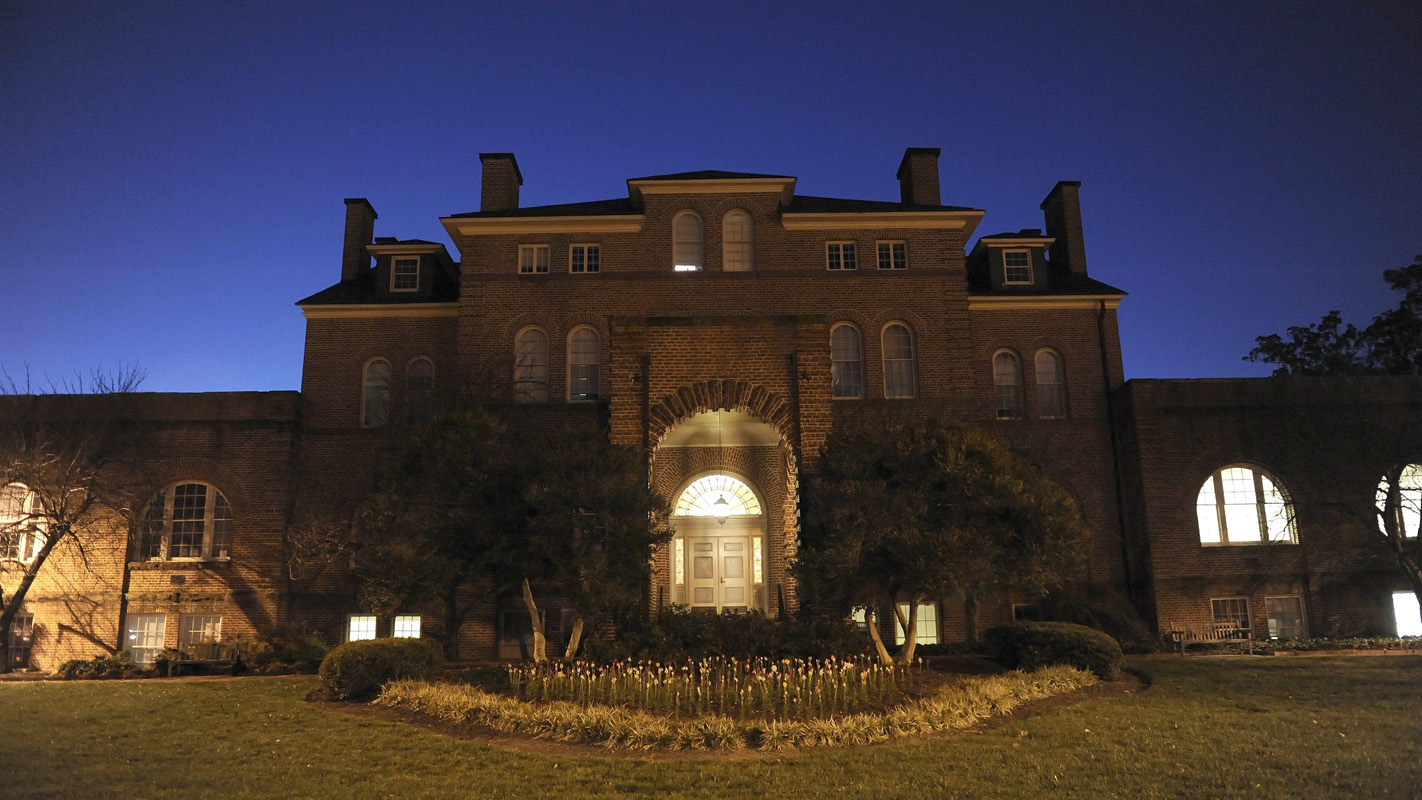Ever feel completely wigged out going up the steps of Holladay Hall? Even more than when you get an unexpected summons from the provost’s office, we mean.
Maybe, just maybe, it’s because the halls of First Building, as the brick structure with the high arches was called in the first days of the college, are home to more than just administrators.
On this day for ghouls and goblins, maybe it’s time to remember exactly what happened here 125 years ago. Maybe it’s time to dig for more than just a fun-size candy bar or a breath mint in the bowl sitting out for visitors to the chancellor’s suite.
Most people know that the building that bears the name of Alexander Q. Holladay, the first president of the North Carolina School for Agriculture and Mechanic Arts, was built with 1.2 million bricks provided by the prisoners at the state penitentiary.
But did you know the site for the Romanesque revival building was once a family burial ground? That the unidentified bones of several souls who were laid to rest at what was then the old Eason Lee farm had to be relocated?
In the trustees’ minutes of November 1887, the chairman “was requested to see the parties interested in the dead buried on the college grounds with the view of having the bodies removed; otherwise to have them disinterred and buried elsewhere.”
That’s not that unusual, you know, even today. While recently site-prepping for a new building on campus – we dare not say which one – workers were asked to relocate three graves. What they found were almost three dozen sets of bones in need of a new home.
Ghostly Arsonist?
Holladay has a hidden history, one that grows darker when Halloween approaches like a lengthening shadow from the Memorial Tower. Just before Main Building opened in 1889, a fire of unknown origin raced through the halls and nearly delayed the opening of the state’s first technical school.
Woodwork was damaged and the walls were stained by smoke. Insurance paid for the repairs, but no one ever found out who started the fire.
Maybe it was local sharecroppers, ill-at-ease about losing the rolling farmlands that had been purchased from the Lee family by R. Stanhope Pullen to give the city a park and the state an agricultural school.
Maybe some rowdy students or supporters of the University in Chapel Hill, so upset about losing the land-grant funds that the Watauga Club wrangled from the state legislature to create A&M College, flicked their noses – and a cigarette butt – in the direction of their new rival.
Maybe – just maybe – the poor souls who had to be moved from their not-so-eternal resting place wanted to clear the plot again.
“According to a rumor, the fire was started by disturbed spirits of three persons who were buried near the east side of the building,” wrote longtime professor David Lockmiller in his history of the college in 1939.
The Watchman’s Lonesome Vigil
For weeks in the early fall of 1889, while the halls were being plastered and repainted, a lonesome watchman walked the darkened halls with a lantern, no doubt jerking his head toward every pop and crack he heard in the newly erected building while making sure that no arsonist, living or dead, returned to the scene.
Maybe those are his footsteps you hear clicking down the hallway right now.
Maybe the spirits of all those early residents, the prisoners who constructed the school and the university forefathers still lurk around every corner of the hardwood halls.
Maybe they are hidden under the stairwells that open out into Mary Yarbrough Court, biding their time until they make themselves known again to the living.
Maybe if you look closely long enough at the dingy white plaster in between the portraits of presidents and chancellors in the wide hallways and foyers of the first floor you will see a faint face staring back, still begging for peace nearly 13 decades after it was so rudely carried to a new resting place.
Then again, maybe not.
- Categories:



